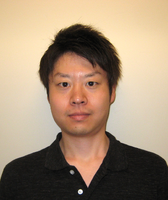Research Experience
-
2023.07-Now
Waseda University Center for Data Science Associate Professor (fixed-term)
concurrently
-
2023.04-Now
Waseda University Institue for Advanced Study Associate Professor (Non-tenured)
-
2018.04-2023.03
National Astronomical Observatory of Japan Subaru Telescope NAOJ Fellow
-
2017.04-2018.03
University of California Santa Cruz JSPS Overseas Fellow
-
2015.04-2017.03
The Graduate University for Advanced Studies JSPS Research Fellow for Young Scientists
-
2013.04-2015.03
Subaru Telescope Subaru Research Intern


Click to view the Scopus page. The data was downloaded from Scopus API in January 14, 2026, via http://api.elsevier.com and http://www.scopus.com .